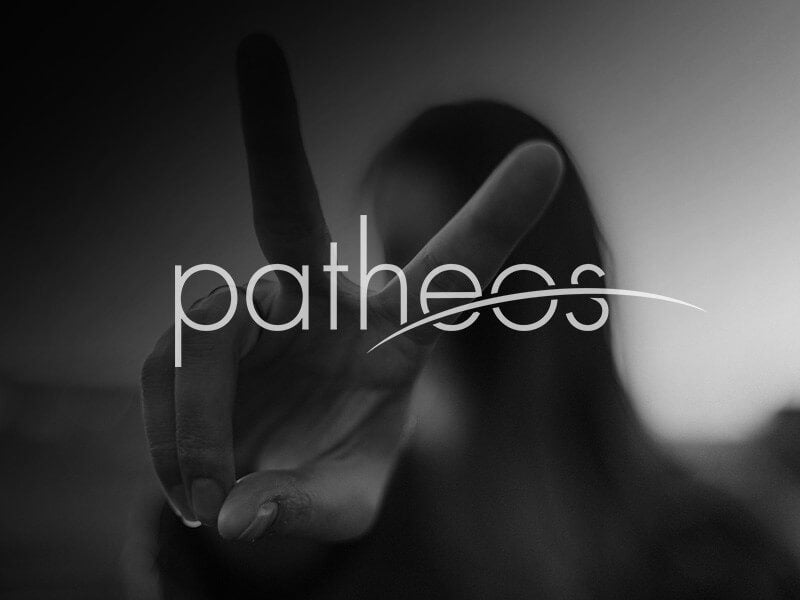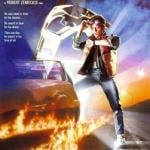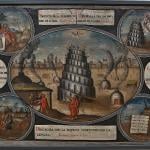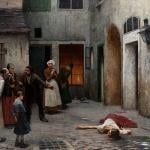If, this Easter morning, I failed to leap out of bed and sing the praises of a risen Lord, I had good reason. My lower body bore the marks of a stressful pilgrimage. These included a blister an inch and a half long on my left arch, and a cut of about equal length on the right big toe. Add to those a certain soreness in the quadriceps, a tenderness in the hamstrings and a general enervation about the gluteus maxmius, and you’ll have the full clinical picture.
The previous evening, I’d made a 22-mile round trip to Vigil Mass on foot. Because it was Easter, I’d undertaken this miniature camino in wing tips. My destination was not a generally recognized shrine, but an ordinary parish church in North Scottsdale. Back in November, a friend of mine, who is a regular parishioner, had suffered a massive stroke, and I was eager for updates. But, thanks to Facebook, I could have gotten one through mutual friends without leaving my kitchen. No, I walked to this perfectly run-of-the-mill place because, like an aged and unambitious Forrest Gump, I just felt like walking.
Ambulation may be the one area in which Catholic religious tradition and my own native inclinations agree perfectly. In the Gospels, Jesus puts in His time on water, and very briefly, on an ass’s colt. But, for the most part, He hoofs it. Without explicitly restricting the disciples’ means of conveyance, His exortation to “Take nothing for your journey; neither staff, nor scrip, nor bread, etc.,” put St. Francis in mind of foot-mobile evangelization force. St. Dominic, who dispatched his preaching friars in pairs, had broadly the same vision. In the movie adaptation of Umberto Eco’s Name of the Rose, the part where inquisitor Bernard Gui travels in a lavishly appointed carriage — the 14th-century equivalent of an Escalade — looks false to the point of libel. Whatever can be said against Gui, whose heresy trials resulted in 42 executions, the Dominican would have gotten around mainly on his own humble tootsies.
Thoreau suggests that the verb “to saunter,” referred originally to medieval pilgrims. When asked why they were walking, they answered that they were going “a la Sainte Terre,” or to the Holy Land. (The hint is that they had no such plans in fact, but weren’t above fudging the truth in their pleas for alms.) Fittingly, there’s nothing aescetical in Thoreau’s appreciation for walking. On the contrary, he sees it as both a luxury — since it requires leisure time — and, for a person of imagination, a necessity. Unless he spends at least four hours a day “sauntering through the woods and over the hills and fields, absolutely free from all worldly engagements,” he might, he fears, go stark, raving bonkers.
Probably, my own walking fever has more in common with Thoreau’s than St. Francis’. In my family, my mother was the aescetical one. For her, ploughing the Manhattan streets in what were then called sensible shoes represented a revolt against the internal-combustion engine. Like sugared cereals, carbonated drnks and fast-food chains with no obvious ethnic flavor, Benz’s folly represented a pillar of suburban decadence. She walked fast — “A dazzling ball of energy,” said my father, who claimed she forced him off the sidewalk one day when they chanced to cross paths on Amsterdam Avenue. I used to imagine her as a John Henry figure, outpacing a yellow cab on a race from the Columbia campus to South Street Seaport until its head gaskets melted.
The only sure way to upend aesceticism is to find fun in it. Finding people who enjoy being flogged or wearing hair shirts wouldn’t be much of a challenge at all. (If anyone likes, I can steer him toward certain websites.) By the time I was 12, walking had evolved from a discipline into a full-blown kink. Like Thoreau, I found in walking a rare kind of freedom. With a mixture of pity and admiration he writes of people who “confine themselves to shops and offices for weeks and months, ay, and years almost together.” I can barely imagine what he’d have said about people who ride the No. 6 train or the Madison Avenue local bus. Denied even the privacy afforded by a cubicle, these poor souls have no choice but to stare each other in the face, or the armpit, until their stops. It’s the kind of crush-of-humanity experience that any sensitive person would want to reserve for the Last Judgment or visits to the MVD.
When people call Manhattan a walker’s city, they mean it’s designed for the short jaunt. Densely packed with restaurants and boutiques, supermarkets and newsstands, it creates for the resident the possibility of seeing to all his existential needs without having to walk much more than half a mile in any direction. Phoenix, which sprawls for dozens of miles in every direction, with only a few official commercial districts and only the barest hint of a skyline, is a hiker’s city. Reaching any destination more rewarding than the local Circle K means covering miles at a stretch.
Whenever my fridge starts looking empty, I grab my green duffel bag and march through the desert of Papago Park to the Smart and Final on Scottsdale and Oak. Then, having loaded the duffel with three weeks’ rations (12-packs of Maruchan lunch noodles on the bottom), I march back, for a round trip of eight miles. In one recurring daydream, the ghost of General Bigeard meets me at my door and, consulting a checklist, informs me I’ve covered enough ground to qualify, at last, for the képi blanc. As he crowns my sweating brow with the storied hat, I straighten and salute, grinning exaltedly, the way Sam Jaffe did at the end of Gunga Din, when we see him outfitted in regimental tartan.
Thoreau associates walking with the impulse to seek out Nature and the Wild (caps his) — all that Unabomberish stuff. He feels alarm in those walks when he finds himself “not being easily able to throw off the village.” Here, he and I part company a little. It’s true that Phoenix has plenty of Nature to enjoy. In Papago Park, which begins about a mile from my house, you can climb brick-red buttes pocked by holes and recesses that could have been made by God’s own loving thumb. In Vista del Camino Park, if you’re willing to ignore the driving ranges, you can stroll beneath swaying eucalyptus trees around ponds fished by ducks and geese and even cranes. But I’ve found that my own compass leads me to Old Town Scottsdale and Downtown Tempe. Chic and upbeat and well-swept, their proportions obsessively planned, both have as much in common with the Upper West Side as anything west of the Rockies. If Thoreau walked to nuture his inner Noble Savage, I grab at the best of both worlds, waltzing Mathilda in order to feed my starving inner yuppie.
Making my pilgrimage last Saturday afternoon, I felt these paradoxes as sharply as my feet felt the pinch of my Bostonians. On one level, in tribute to the crucified Christ and in sympathy with a stricken friend, I was consciously courting discomfort. Yet, at the same time, I was treating myself to views of the most comfortable parts of the Valley. Reaching the church meant walking through the Scottsdale waterfront promenade, past high-end strip malls, walled, like the city-states once fought over by Guelph and Ghibelline. Costumed in Calvin Klein dress pants and a Nautica dress shirt (which, I was overjoyed to discover, I was beginning to fill out), I took pleasure in knowing I could pass for a native.
A cheap imitation of sacrifice balanced by a cheap imitation of comfort isn’t much of a compromise, is it? At one point, as I passed what was once a Pony Express stop but is now a small bridge over one of Scottsdale’s gracious canals, I decided it would be fitting if, on my way back, I were mistaken for a real yuppie and jackrolled by my actual peers. That didn’t happen. Here’s what happened instead: worn out from the outward journey, I slumped through Vigil Mass in a stupor, and nearly fell asleep during the new long-form Eucharistic prayers. The next day, I woke up so sore, I couldn’t walk anywhere until around five in the evening. And then I had to wear my crappy old tennis shoes.
Maybe that’s how Christian karma works: if you die with Christ only a little, you get reborn with Him only a little. Don’t ask me how that’ll affect next year’s Vigil plans. In any case, I hope to have a new car by then.











